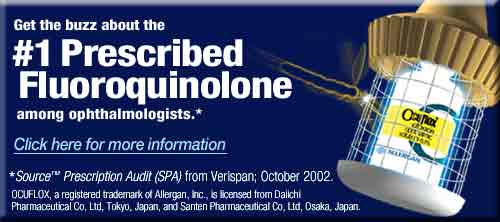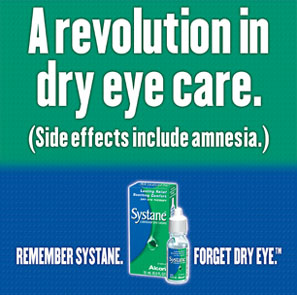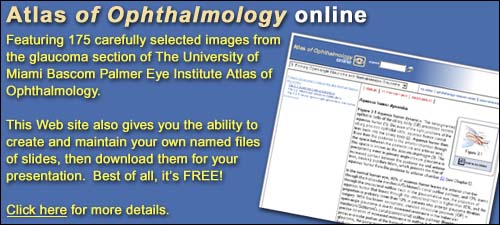BRIEFLY
- SURGILIGHT EXPANDS USE OF EXCIMER
LASER TECHNOLOGY. SurgiLight has granted an exclusive three-year
license for the EX-308 Excimer laser technology to RA Medical Systems,
Inc., of Carlsbad, Calif., a privately held developer, manufacturer
and marketer of equipment for the treatment of various medical conditions.
RA Medical anticipates introducing its Pharos EX-308 Excimer laser
system this summer, for treatment by dermatologists of psoriasis and
vitiligo (pigmentation loss). The FDA has cleared the technology itself
for treatment of these two disorders, which by some estimates affect
nearly 11 million Americans.
- GENE INHIBITING MAY REDUCE APOPTOSIS
IN GLAUCOMATOUS PATIENTS. Senesco Technologies, Inc., recently
announced that inhibiting the expression of its patent-pending gene,
apoptosis eucaryotic Initiation Factor 5A ("Factor 5A"),
has been shown to reduce apoptosis by up to 70 percent in preclinical
studies with human lamina cribrosa cells taken from human optic nerve
heads. Apoptosis is a critical factor leading to blindness in glaucoma
patients; Senesco is a research and development company focusing on
technology that regulates the onset of cell death. A company spokesperson
says that the finding indicates that blocking the expression of Factor
5A could potentially be an effective treatment for glaucoma.
- ACNE DRUG MAY HELP PREVENT BLINDNESS
IN STARGARDT’S MD. In a recent edition of the Proceedings
of the National Academy of Sciences, investigators at the University
of California at Los Angeles reported that the acne drug Accutane
(Roche Holding AG) suppresses the accumulation of toxic pigments in
mice bred to have a genetic defect simulating Stargardt"s macular
degeneration. The inherited progressive disease, for which there is
no treatment, causes blindness in approximately 30,000 children and
young adults in the United States by disrupting a protein responsible
for flushing out all-trans-retinaldehyde, a byproduct of vision, from
photoreceptors in the retina. One of Accutane’s possible side
effects is night blindness — it interferes with visual pigment
recycling. In the Stargardt’s mice injected daily with Accutane
over two months, toxins stopped accumulating in the eyes, with no
effect on daylight vision.
- NATIONAL SURVEY: ITCHY, WATERY EYES
ARE MOST ANNOYING ALLERGY SYMPTOM. A U.S. survey of 1,000
people conducted last month by Opinion Research Corporation International
on behalf of Novartis Ophthalmics shows that itchy, watery eyes are
the single most annoying allergy symptom among sufferers of common
allergies, topping runny nose, sneezing, and scratchy throat. Yet
more than two-thirds of those surveyed believe that their ocular allergy
symptoms can be sufficiently treated with oral medications, and 30
percent were unaware that prescription eyedrops are available specifically
to treat eye allergies.
|





















